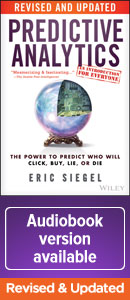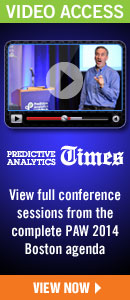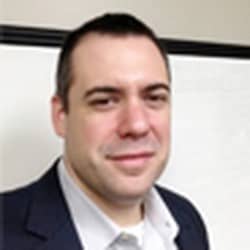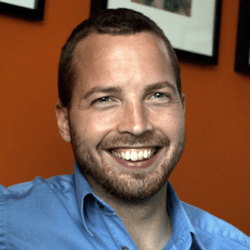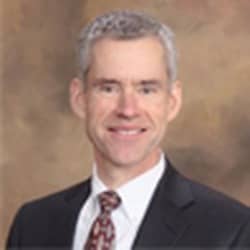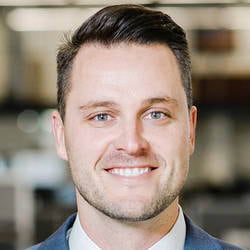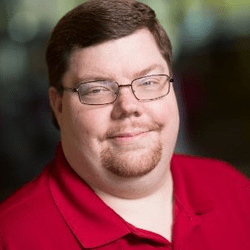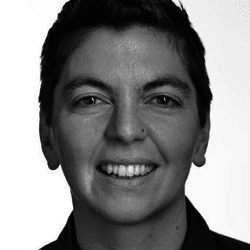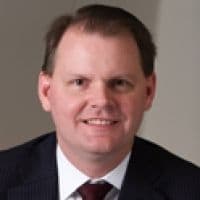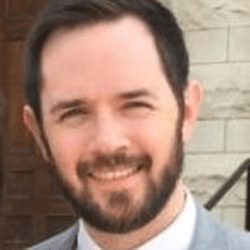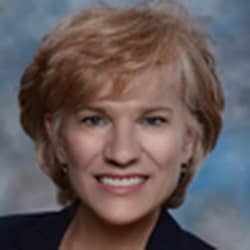Conference Day 1: Monday, April 4, 2016
8:00-8:30am • Room: North Registration
Registration
8:00-8:30am • Room: Salon 8 & 9
Networking Breakfast
8:30-8:35am • Room: Nob Hill AB
Conference Chair Welcome
8:35-9:20am • Room: Nob Hill AB
Keynote
Your Place in the Future of Workforce Analytics
Human Resources is feeling the pressure. Predictive Analytics in HR's future, but it not yet clear how HR will get there.
As practitioners, we need to carry a clear sense of how to bring their organization forward into this new world. Projects and Data need to be focused properly to build business value and win trust. Greta will present a vision of predictive workforce analytics that is business-focused and deeply integrated into company operations.
She will walk through a variety of workforce analytics strategies, sorting out the landscape for managers and practitioners alike. She will lead the way from inward-focused metrics such as "time to fill" to enterprise focused concepts such as "employee lifetime value."
Workforce Analytics is a new and vital part of the larger predictive analytics community - we can learn from these other domains and grow with them. Come learn a bit about the future of Workforce Analytics as well as practical strategies for how to create that future at your organization.
[ Top of this page ] [ Agenda overview ]
 9:20-10:10am • Room: Nob Hill AB
9:20-10:10am • Room: Nob Hill AB
Diamond Sponsor Presentation
Clearing a Path for People Analytics
Chantrelle Nielsen describes how business leaders can overcome obstacles to adopting organizational analytics, and how it's being applied to the biggest challenges in the C-suite. Learn how VoloMetrix sparked a new field of enterprise analytics and how Microsoft continues to drive wide-scale transformation at the world's largest organizations.
10:00-10:30am • Room: Salon 8/9
Exhibits & Morning Coffee Break
10:40-11:25am • Room: Nob Hill AB
Track 1:
Visualizing Organizational Movement for Opportunity Identification
The ability to communicate results of increasingly complex analysis and models is a very memorable and focused way is paramount to our leaders. This session focuses on some specific cases where visual aids are beneficial, as well as the ingredients needed to make these visuals meaningful and memorable. We will dig a bit deeper in to the "why" behind the usage of such techniques as well.
This session will cover visual story techniques associated with employee movement, event impact, simple text mining and KPI tracking using simple tools such as R and Office products.
10:40-11:25am • Room: Nob Hill CD
Track 2:
Open Sourced Workforce Analytics: An Overview of 3 Algorithms for Common Predictive Modeling Situations
When creating predictive models, data scientists are often faced with 3 common tasks; they have to:
- Filter down a large list of variables to the most important ones
- Visualize the impact of those variables in order to effectively communicate results to drive action
- Make predictions as accurately as possible
In this session, Jason and Nery will explain 3 algorithms they have found useful for those common tasks, and show examples of how they were applied. They will also conduct a demonstration using open source software with sample data.
[ Top of this page ] [ Agenda overview ]
11:30am-12:15pm • Room: Nob Hill AB
Track 1:
Too Late? Too Soon? Using Predictive Modeling to Gauge the Timing and Consequence of Retirement Choice
Decisions about retirement plan design are commonly driven by considerations of cost and risk. All too often, organizations fail to anticipate the likely impact of these decisions. This can lead to severe unintended consequences for workforce productivity and impediments to the organization's ability to secure the workforce required to meet strategic objectives. Fortunately, measurement and modeling tools now exist to determine how retirement designs actually affect employees' decisions concerning retirement and the likely impact of these choices on critical workforce outcomes such as the "velocity" of internal talent movement, the emergence and location of career choke points and the propensity of more junior talent to turn over, among other things.
This session will speak to the importance of applying a strategic and empirical lens to questions about retirement plan design and how predictive modeling can help understand and thereby influence the decision of employees to retire (or not) once eligible. In addition to describing the modeling methodology that permits such measurement, the presenter will offer several case examples from actual client work that illustrates the power of analytics to inform retirement plan design decisions.
 Haig Nalbantian
Haig NalbantianSenior Partner, Well-Known Authority on Human Capital Measurement and Management
Mercer
11:30am-12:15pm • Room: Nob Hill CD
Track 2:
Case Study: Predicting High Performer Compensation Using Market Data
Large companies rely on salary surveys to determine how much to pay employees. This creates three problems. 1. Different surveys have diverging results for the same job, due to sampling errors. 2. Survey method focuses on providing median salaries, often at the expense of predicting salaries for high performers, who are often paid above average. 3. Survey data is only good for one year. I believe the ability to predict salary levels for high performers 2-3 years down the road will differentiate a great companies from good ones. And advanced analytics techniques have made this kind of predictive analysis possible.
[ Top of this page ] [ Agenda overview ]
12:15–1:45pm • Room: Salon 8/9
Lunch in the Exhibit Hall
1:30-2:15pm • Room: Nob Hill AB
Keynote
What Workforce Analytics Can Learn from the Marketing Analytics Domain
Marketing regularly borrows all the best analytical techniques from everyone else and keeps the most valuable. We'll do the same during this session and discuss a number of techniques that have proven themselves out in marketing, but are largely unknown in workforce analytics. We will focus on the analytics techniques that:
- Drive a world-class employee experience that still fits in the budget
- Tell us where to invest to make the most difference
- Can still predict and optimize even though we only have squishy, indirect measures
- Engage hearts and minds to create a fanatical culture
2:40-3:00pm • Room: Nob Hill AB
Track 1:Gold Sponsor Presentation
Quantifying the World of "Data with Feelings": Creating Insights from Multi-Company Data
Workforce data is unique: it is "data with feelings." People's identities, strengths, weaknesses, and livelihoods are intertwined with the data their company's HR management, recruiting, performance management, compensation, and other systems produce. As a data scientist, how can you ensure you maintain anonymity when leveraging that data to uncover trends, identify new insights, and generate benchmarks? And how can you ensure your findings are accurate and relevant?
In this presentation, Visier Data Scientist Anton Smessaert will discuss how he tackled these issues when implementing Visier Benchmarks: a set of benchmarks generated by aggregating and anonymizing people data from Visier's many "big brand" name customers. Visier Benchmarks unlock complex patterns in workforce data and can help understand questions like: How strongly does age impact the resignation rate? Are gender, age, and promotion rates correlated? Or, can we quantify the difference in first-year employee retention by industry?
Join Dr. Anton Smessaert as he shares how he has overcome complex challenges to tap into an incredibly unique and rich source of workforce insights.
3:05-3:25pm • Room: Nob Hill AB
Track 1:Case Study: Humanyze
Using Wearables and Big Data to Reinvent Management
Communication with customers and information flow between coworkers are among the most crucial aspects of any business, but until today there hasn't been any objective, scalable way to capture that information. Using cutting edge wearable sensing technology I investigate how people communicate with each other in the physical and digital world and how their communication patterns impact happiness, individual performance, and organizational success.
2:40-3:25pm • Room: Nob Hill CD
Track 2:
Use Case: Embedding Advanced Analytics into Acquiring, Nurturing and Retaining Talent
The use (and misuse) of Advanced Analytics to drive decision making is ubiquitous. Advanced People Analytics is no exception. Star performers are key to an organization's growth. Whether it is to prospect, recruit, nurture or retain your stars, Advanced People Analytics can help. It is not a panacea. Yet, it is for real and can drive meaningful change, if done right. Learn about a real use case from concept to the build out of two generations of retention programs driven by Advanced People Analytics. Also learn about adopting Advanced Analytical methods from across industries to solve Human Capital problems.
Exhibits & Afternoon Break
3:55-4:40pm • Room: Nob Hill AB
Track 1:
Case Study: Eleks
How Eleks is Building a Career Advisor Tool Based on Predictive Analytics
Mapping employee's competence and experience on business needs is a key point of careful strategic planning and aligning business needs and talent capabilities. As people drive the achievement of a company's objectives, comprehensive talent optimization strategy can give a significant boost to any business. This session shares insights into building a career advisor tool based on predictive analytics.
3:55-4:40pm • Room: Nob Hill CD
Track 2:Research Findings: Using Predictive Analytics to Reduce Unemployment Insurance Costs
Many Human Resource professionals understand the basics of Unemployment Cost Management, including eligibility review, claims processing and compliance issues related to UI Integrity legislation. However, having insight into the different factors that impact positive outcomes at the determination phase will inform on claims management best practices that optimize processing activities and reduce unemployment tax liability. Learn how predictive analytics can be applied to guide your claim processing efforts and ultimately, lower your unemployment insurance costs.
4:45-5:30pm • Room: Nob Hill AB
Track 1:Sales Rep Assessment: Shifting the Curve of Sales Performance with Predictive Analytics
Competing for, managing performance of, and retaining the top sales talent is a consistent struggle for many of today's top organizations. One of the nation's leading home automation and security providers, Vivint, leveraged analytics to better understand what drives performance of the best sales reps, assessed gaps in performance, and created the ability to track shifts in movement at individual and organizational levels. The analytics initiative lead to the development of a robust predictive tool helping Vivint to migrate what's special about the top performers to the rest of the field by predicting success (i.e., sales) for all incoming sales reps. This predictive overall assessment was founded on the important value of self-assessment and continual improvement and has produced significant shifts in sales rep performance since inception.
4:45-5:30pm • Room: Nob Hill CD
Track 2:
Breaking the Curve: Using Predictive Analytics to Boost Call Center Retention
Many call centers share the same challenge: retaining human capital. T-Mobile proactively addresses employee retention, but needed a predictive analytics solution that gives leaders a tool to connect effective coaching practices with the employees most at risk of leaving. We will describe our process for constructing a predictive analytic algorithm and solution that are both accurate and business-relevant. Then we will discuss how we moved the tool into call centers with a pilot experiment. The experiment helped us earn buy in from business leaders, HR business partners, and frontline supervisors and allowed us to expand the tool's reach.
Networking Reception
Dinner with Strangers
Sign up in advance at the eZone, Booth 418
Conference Day 2: Tuesday, April 5, 2016
8:00-8:45am • Room: North Registration
Registration
8:00-8:45am • Room: Salon 8 & 9
Networking Breakfast
8:45-8:50am • Room: Nob Hill AB
Conference Chair Welcome Remarks
8:50-9:35am • Room: Nob Hill AB
Keynote
Leapfrogging Ahead: How to Drive Human Capital Analytics
Human Capital Analytics is 5-10 years behind Customer Analytics. This lag is understandable: Revenue drives business, and revenue comes from customers, so that's where businesses typically invest mostly heavily. However, employees actually sell to the customer, retain the customer, and build the products we sell to those customers. The focus on human capital analytics has increased, but is not yet where it needs to be. Human capital analytics is underinvested and under-resourced in most companies. In order to garner more investment and resources, human capital analytics leaders need to move from reporting and metrics to diagnostic analytics – a shift that is difficult, but necessary to show the true business value of human capital analytics. Join Cigdem Gencer, Head of International Human Resources (Wells Fargo & Co), as she discusses the challenges for developing human capital analytics, as well as thought-starters on where to use customer analytics frameworks to leapfrog our human capital analytics capabilities.
[ Top of this page ] [ Agenda overview ]
9:40-10:25am • Room: Nob Hill AB
Track 1:Case Study: The Predictive Workforce Analytics Journey at F. Hoffmann-La Roche
HR data has the potential to become much more than just metrics of the past in a report. Not only can it aid leaders to make unbiased data-driven decisions rather than relying on gut feel, but also help position HR as a strategic advisor to the rest of the business, a role it has never quite managed to take on. However, reaching a high HR predictive analytics maturity is easier said than done, especially in a global company with a decentralized organization structure. This presentation shows how we approached this challenge at Roche, providing examples of concrete HR predictive analytics projects (such as predicting employee turnover and the costs it generates) and how we established a mature Global HR Reporting & Analytics function in the process.
9:40-10:25am • Room: Nob Hill CD
Track 2:
Case Study: Wells Fargo
Beyond Traditional Turnover
Creating Value by Quantifying the
Impact of Attrition
Are you letting the good ones get away? The prevailing attitude that "lower employee turnover is always better" is a myth. In fact, some amount of turnover actually benefits your business. Unlock significant value by quantifying the reduction of high-impact turnover through a case study. Start by tracking attrition of your highest performers rather than the amount of turnover to help focus on retaining those employees most critical to your business.
10:25-11:05am • Room: Nob Hill AB
Track 1:
Big Data Driven Labor Scheduling
Retailers strive to match store labor with customer traffic. However, retailers are either overstaffed or understaffed nearly 80-90% of the time. This causes erosion of brand loyalty from consumers and dramatically lower profit margins for the retailer. This also impacts the store associates as well. Many retailers use a technique called Just In Time Scheduling (JITS) to solve the over/understaffing issue. However, recent laws make it much more difficult to solve this problem with JITS. With 42 million Americans working in retail, this is a large unsolved problem.
Fortunately, recent technology advances have enabled this problem to be solved.
10:25-11:05am • Room: Nob Hill CD
Track 2:
Predictive Job Maps - Modeling an Entire Workforce with a Tree of Models
Over time, employees' careers progress in planned and unplanned ways. They leave trails of data in HR and Line-of-Business systems. These movements have long been the domain of workforce planning, but how can we use this data in predictive analytics?
It turns out, we can do a lot. In fact, we will argue that this living, beautiful map encompasses everything that HR does and touches.
By integrating performance and attrition models into this tree, predictive intelligence can inform and guide this emergent order in line with larger goals. We can hire at the ground level with an predictive eye to succession many levels up. Fact-driven models can find optimized pathways for different clusters of employees. Stray paths of employee movement can form natural experiments, to find novel and useful pathways for employee growth.
This is not a commercial product discussion, but a live exploration of a new concept in managing workforces learning, and careers.
[ Top of this page ] [ Agenda overview ]
Exhibits & Morning Coffee Break
11:20am-12:05pm • Room: Nob Hill AB
Track 1:
Anatomy of a Predictive Attrition Project: The Good, the Bad and the Ugly
Recent studies have shown that companies using Predictive Analytics are three times more likely to realize cost savings and efficiency gains than companies who are not… but how do you get started? This session will explore one company's journey towards Predictive Analytics and provide some practical advice on how to take those first few steps. This discussion will provide real-life examples of completing an Analytics project to predict flight risk. During this session I will share lessons we learned, and hopefully help you avoid some of the common pitfalls. If you're just getting started on your predictive journey this session may be for you.
11:20am-12:05pm • Room: Nob Hill CD
Track 2:Balancing Privacy with Powerful Employee Churn Predictions
In the age of Big Data, ethics is becoming increasingly important when predicting behavior responsibly. This is especially true when using predictive analytics to understand the actions of consumers or employees. Join us in reviewing a case study where we apply predictive modeling to increase employee retention, while protecting employees from the invasive big brother¯ perception.
[ Top of this page ] [ Agenda overview ]
Lunch in the Exhibit Hall
1:30–2:15pm • Room: Nob Hill AB
Special Plenary Session
The State of Predictive Workforce Analytics in Enterprise Applications
Holger has the unique perspective of a leading analyst with insight into every enterprise application on the market. He will bring the audience up to date with current trends for advanced analytics in enterprise applications - how analytics are conceptualized, created, calculated, presented, and maintained. Holger will dig deeper into how analytics fits into the software landscape, with special attention to HCM automation and how HCM trends influence the adoption of analytics by HR professionals. As a predictive analytics expert himself, Holger is keen to remind us what 'true' analytics are, versus the 'faux' analytics often seen.
Please join Holger for a clear view of the current market, the latest trends, and a bit of fun with analytics. You can read Holger's heavily-followed blog at Enterprise Software Musings.
2:15-3:00pm • Room: Nob Hill AB
Expert Panel
Real-World Experience from Large Predictive Projects
Session Description coming soon.
Moderator:Panelists:
 Haig Nalbantian
Haig NalbantianSenior Partner, Well-Known Authority on Human Capital Measurement and Management
Mercer
Exhibits & Afternoon Break
3:30–4:15pm • Room: Nob Hill AB
Track 1:
Employee Attrition in the Knowledge Economy – The Value lies in the Details
Companies with highly skilled and sought after "knowledge workers" need to identify and understand the push and pull factors at play in their organization. Instead of taking a peanut butter approach, analyzing attrition by key talent segments creates real value. In this session we will discuss how a blend of creative variable development, predictive modeling and data visualization techniques can help predict employee flight and build talent pipelines in areas where churn may be part of a new normal.
3:30–4:15pm • Room: Nob Hill CD
Track 2:
Predictive Analytics Unlocks Sustainable Cost Reduction In Hourly Workforce
Payroll leakage is an increasing area of focus as employers work to get their arms around one of their largest areas of expense. With an ample supply of accurate, detailed, real time data about the what, where and how much of per hour payroll spending, predictive analytics is exposing ways to significantly change the way we manage labor cost.
This presentation will focus on how specific predictive analytic methods are applied to timekeeping and scheduling data and the mistakes organizations unknowingly make. Professionals in time and labor management and data science will demonstrate how payroll leakage is identified, evaluated andsustained.
[ Top of this page ] [ Agenda overview ]
4:15-5:00pm • Room: Nob Hill AB
Panel:
Politics, Power Tools and Perfect Data
In this panel, we will discuss some of the practical aspects of getting a predictive analytics assignment started and completed within an organization. Hence, the "politics" in dealing with data ownership and business process control, "power tools" in terms of the advanced data/statistical tools that we have available today, and "perfect data" in terms of the fact that our data will never be so.
The over-arching goal is to help people in the audience get a project started and deployed into operations.
[ Top of this page ] [ Agenda overview ]
